Armenian communities test human-centered design for improved service delivery under the M4EG
Urban Imaginaries is a programme that supports towns and cities to reimagine local economic development and governance through new tools. Urban Imaginaries is one programme under the joint EU and UNDP initiative Mayors for Economic Growth (M4EG) Facility. The selected cities receive seed funds of up to 60,000 EUR and technical support for their experiments in their focus area. The partner of the programme is the Centre for Public Impact.
In the first cohort of Urban Imaginaries 2022, three communities from Armenia took part: Alaverdi, Ashtarak, and Charentsavan. From early spring to summer of 2022, human-centered design thinking was introduced to the communities, where they explored their identified problem and vetted and designed solutions through end-user research with residents. In November, all three presented their learning and effects so far in a regional Show and Tell event.
What challenges were sought addressed?
The three communities identified different challenges. In Alaverdi, Lori region, (20,445 residents), residents and tourists are seeking a richer cultural life for a more thriving, inclusive community however the community is facing decaying building facilities and a shrinking number of local cultural activities.
Ashtarak, Aragatsotn region, (75,750 residents) was recently expanded to a consolidated community that includes one urban and 34 rural settlements, leading to a greater need for public transportation reform to boost connectivity and livelihood opportunities.
The municipality team in Charentsavan, Kotayk region, (40,000 residents) finds that its center is in need of a make-over to become more attractive for residents and tourists alike.
Learning and effects in Alaverdi
To provide sufficient conditions for cultural events, the Alaverdi municipality collaborated with the local business and renovated and furnished a privately owned cultural house. With the joint work of government, partners, local activity companies and TV company, a number of cultural events were successfully held in the cultural house. The positive feedback received from the residents indicates that they enjoyed the performances and has confirmed the awakening of cultural life. For the next step, the municipality will renovate the municipal cultural house and develop new innovative content to promote cultural life in the consolidated community, where both the residents and visitors would benefit. The municipality team reflected on the importance to experiment before fully fledged implementation for risk mitigation, and the importance to get adequate honest feedback from residents and experts. They intend to apply the approach acquired from the learning journey to both their future work and issues of neighboring communities. The municipality succeeded in leveraging the M4EG seed-funding to confirm additional resources of about two hundred thousand euros by the national government’s 2023 subvention program.
Learning and effects in Ashtarak
As an experiment, the community designed one route and rented two minibuses to operate, which was used by an estimated 130 passengers per day. They also introduced differentiated fee rates for specific groups including students, pensioners, and persons with disabilities. Coming up, 11 minibuses will be purchased, including 3 for people with disabilities, and 35 bus-stops will be constructed, at least one per settlement of Ashtarak. In line with the new transport network, a new ticket system will be introduced as well. The leadership successfully leveraged the seed-fund under M4EG to confirm additional resources of 150,000 euros for this scale-up by the national government’s 2023 subvention program, and private sector representatives have shown the willingness and made commitments to be involved. The municipality will also try to mobilize additional funding from international donors. In order to compare whether the municipality or the private sector is the better service provider, two routes will be provided by the private sector. The growing initiative is intended to foster increased connectivity and hence have a positive impact on the tourism sector and economic development.
Learning and effects in Charentsavan
Charentsavan municipality conducted two experiments to explore how to realize its tourism potential. One experiment was the improvement and maintenance of Khanjyan street, the central street of Charentsavan. Parts of the street were refurnished, including the Cinema Theatre Square, turned into a cultural space, where a festive cultural event was hosted after the construction. The part of the central street used by elderly people for leisure activities was also renovated to improve it. During the experiment, the municipality launched an awareness campaign, which was found to help change people’s hesitation to use funds for cultural space maintenance. The community team is of the opinion that the experiment also contributed to fostering improved trust of residents toward the local authority and helped to achieve more inclusive social agreement as diverse age, occupation and ability groups of population have been taken into consideration. Next year, a larger area that starts at the entrance of the city will be renovated.
To further boost the rural tourism potential, the local authority also supported a number of other initiatives in villages that part of the community, including the organization of the Arishta (Armenian pasta) Festival in Bjni village, where the team involved international stakeholders, provided additional funds from the municipal budget and strongly encouraged villagers to participate. Charentsavan also opened the Horse-Riding Center in Arzakan and invested more financial and information resources in it. This all has helped to increase the visibility of the community as a whole, created a sense of belonging among rural residents, and promoted the involvement of different stakeholders including businesses, NGOs, civil society organizations.
Other than implementing specific tailored-made interventions, each of the municipality teams has developed a new capacity in the field of human-centered design. The adopted approaches and processes would further contribute to both efficient design of municipality’s development interventions, as well as significantly increase the citizen engagement and participation in urban transformation processes.



